Police release timeline detailing slain University of Utah student's relationship with killer
Melvin Rowland ate dinner with another woman after shooting Lauren McCluskey.
The University of Utah Police Department has released a detailed timeline of a slain student's final days, beginning on the night she met the man authorities said would take her life.
Track and field athlete Lauren McCluskey, 21, was shot and killed on the university's campus Monday night by her ex-boyfriend, 37-year-old Melvin Rowland, police said. McCluskey was on the phone with her mother when Rowland attacked her, according to authorities and the family.
University of Utah Chief of Police Dale Brophy ran through the timeline of McCluskey's relationship with Rowland and the events leading up to her death during a press conference Thursday afternoon.
Throughout the press conference, Brophy characterized Rowland as "manipulative," adding that he displayed his "skill and ability ... to con people" throughout his life.
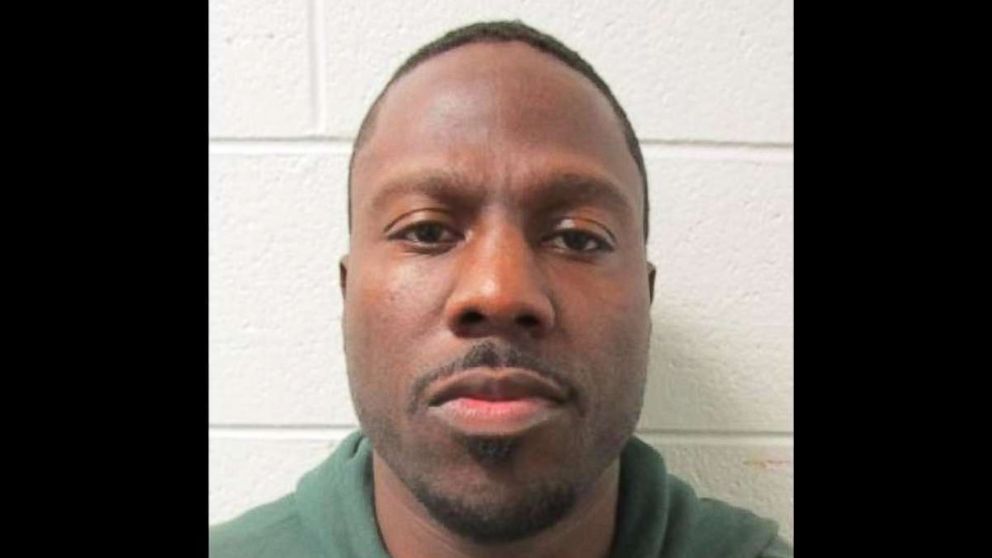
Sept. 2
McCluskey met Rowland at a local bar, where he was working as a bouncer. The pair then began dating "immediately," Brophy said.
Rowland would visit McCluskey often at her residence hall on campus and built friendships with other students.
Oct. 9
While on vacation, McCluskey discovered Rowland's "real identity" and his criminal history, including his actual age and that he was a registered sex offender for a 2004 conviction of enticing a minor, Brophy said. He went to prison for the conviction and was on parole, online records showed.
McCluskey decided to end the relationship and invited Rowland to her dorm to confront him. Rowland allegedly admitted to his sex offender status but denied his real age, contending that he was 30 years old.
Although McCluskey broke up with Rowland, she allowed him to stay over.
Oct. 10
McCluskey lent her car to Rowland so he could run errands after he spent the night at her apartment.
McCluskey's mother, Jill McCluskey, was aware of the breakup and the incriminating details about Rowland, so she contacted campus dispatchers, expressing worry that her daughter was going to pick up her car from Rowland alone, police said.
Police dispatchers then contacted McCluskey to make sure "she was taken care of," Brophy said. When dispatchers contacted McCluskey, she refused their assistance, stating that she didn't feel uncomfortable with Rowland coming up to her apartment.
McCluskey told police that Rowland would be dropping her car off at her dorm room's parking lot and that if "anything changed," she would give them a call back, Brophy said.
Dispatchers then called Jill McCluskey, who lives in Washington state, and relayed her daughter's wishes.
Campus police also sent security officers to McCluskey's dorm, in case Rowland "did anything," or if anything went wrong, Brophy said.
5 p.m.: McCluskey called campus police back and told them that Rowland dropped her car off at the stadium parking lot instead of her dorm, which is several blocks away. The police department sent a security escort to pick her up, and after she recovered her car, dispatchers watched her on campus security cameras to make sure she arrived back at her dorm without incident, Brophy said.
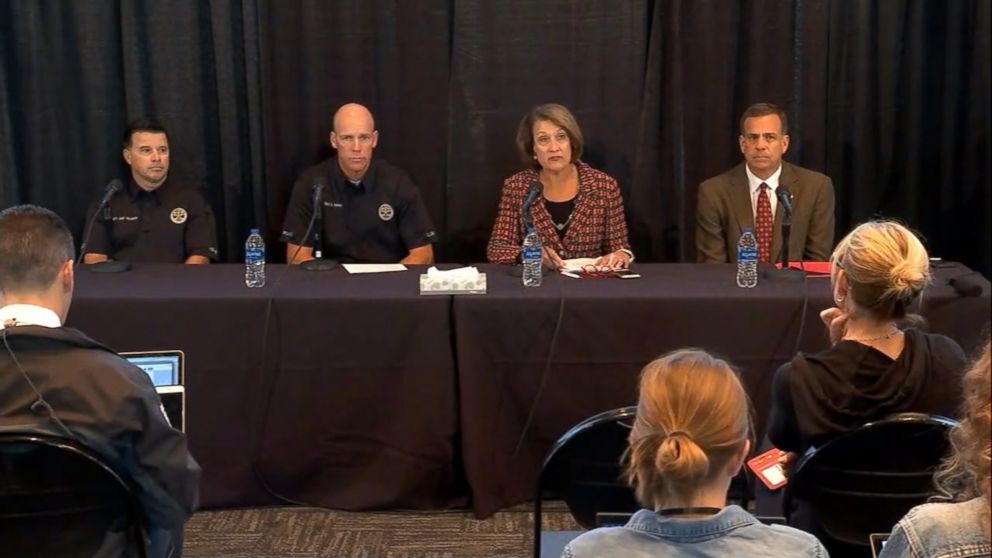
Oct. 12
McCluskey reported to police that she had received "suspicious emails," which she believed were coming from friends of Rowland's.
The messages read that "Rowland was dead, and it was Lauren's fault," Brophy said.
McCluskey quickly determined that Rowland was alive after scanning his social media accounts and seeing that he "had just posted something recently," Brophy said.
The officer asked McCluskey if she felt she was in danger or being threatened by the texts. She stated that she did not, but said that she felt his friends were trying to "lure her somewhere, but she didn't know why," Brophy said.
The officer then told McCluskey not to go anywhere that made her uncomfortable and to let police know if she needed their assistance in any way.

Oct. 13
McCluskey called police to report that she was receiving additional messages. This time, she believed it was Rowland behind the messages, or his friends, and they were coming from several different telephone numbers and email addresses, many of which were spoofed, Brophy said.
The messages demanded money in exchange for not posting compromising photos of McCluskey and Rowland on the internet. McCluskey then stated that she sent $1,000 to an account, in hopes that it would thwart the photos from being published and protect her reputation, according to police.
A patrol officer then pulled a criminal history for Rowland, and authorities began an investigation for possible sexual extortion charges.
Oct. 19
The formal investigation of the extortion charges began. A detective contacted McCluskey to gather additional information about the extortion to identify all suspects involved and to seek an arrest warrant for Rowland and any possible accomplices, Brophy said.
Oct. 19 to Oct. 22
Surveillance video shows Rowland at various locations around campus, appearing to look for McCluskey without her knowledge, Brophy said.
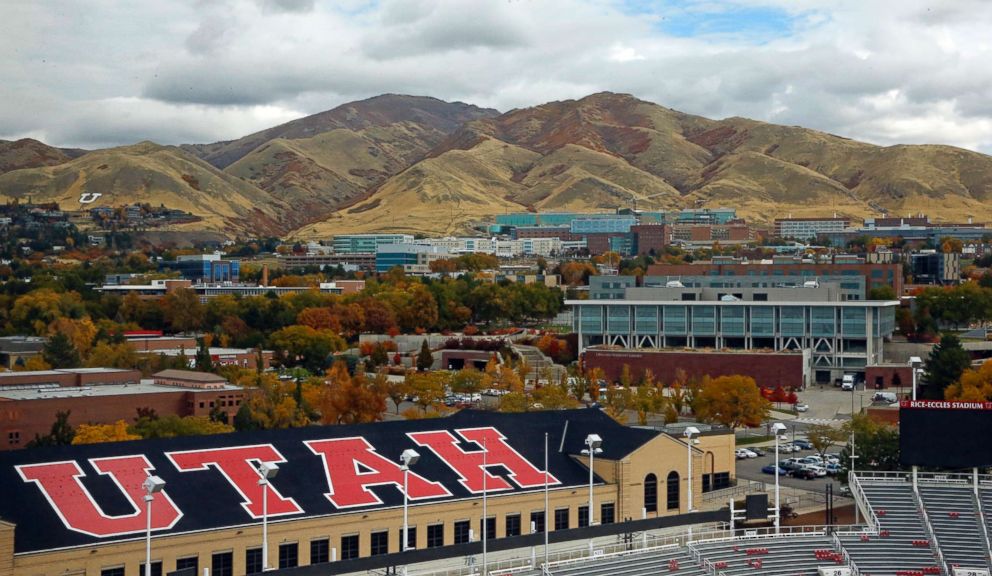
Oct. 22
10:39 a.m.: McCluskey emailed the police department after receiving an additional text from a number she didn't recognize. The sender claimed that he was a detective and requested that she come to the university police station, Brophy said.
McCluskey did not respond to the text. University police believe that Rowland sent that text in an attempt to get her to leave her dorm room.
"We later discovered that Rowland was outside her dorm room at that time, appearing to be looking around and waiting for her to leave," Brophy said.
3 p.m. to 6 p.m.: Rowland spent the afternoon waiting for McCluskey with some of her friends in her residence hall, after befriending them during his and McCluskey's relationship, Brophy said.
8:20 p.m.: Rowland confronted McCluskey in the parking lot outside her dorm.
McCluskey, who was on the phone with her mother, could be heard saying, "No. No. No!" before she dropped the cellphone during the altercation and the line went dead, Brophy said.
Rowland then allegedly dragged McCluskey to a different spot in the parking lot, where he forced her into the back seat of a car that he had driven to campus. He then shot her in the car multiple times, police said.
8:23 p.m.: Police dispatchers received a frantic call from McCluskey's father, Matt McCluskey, who stated he believed his daughter was in trouble and relayed what her mother had heard on the phone. McCluskey's parents knew that she was on her way back from class, but they did not know where she was on campus.
At that time, one the officers who had helped McCluskey during her reports of the strange texts heard the call and said she knew "exactly" where the student lived on campus.
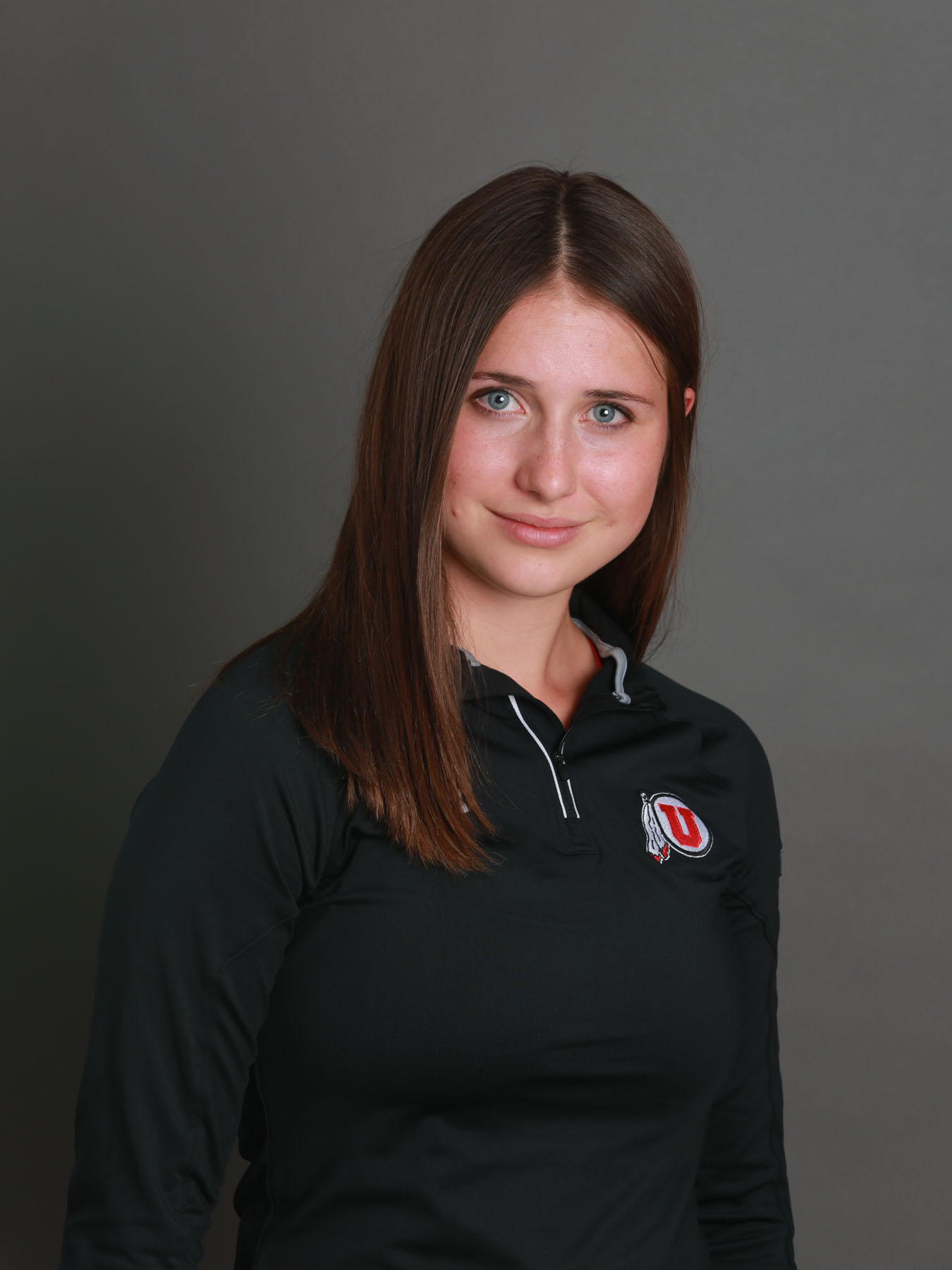
8:32 p.m.: Officers arrived on the scene and began searching for McCluskey. When they arrived, another student had picked up McCluskey's backpack and her cellphone and was on the phone with her mother.
The officers first went to McCluskey's room and searched the entire residence hall. Investigators then canvassed the area, and witnesses told them that while they "thought" they heard a gunshot, the shots were relatively quiet, so they weren't sure, Brophy said.
8:38 p.m.: Rowland was picked up from campus by a woman he had met days earlier on a dating site, telling her that he had just finished a workout. The pair then went to dinner and then to the woman's home, where Rowland took a shower, Brophy said.
"I can't fathom how anybody with a conscience could murder their girlfriend and then go have dinner with somebody else and then act like nothing happened," Brophy said, calling it the "most disturbing detail" of the killing.

9:55 p.m.: McCluskey's body was found in the back seat of the car she was shot in after a second search of the parking lot.
9:56 p.m.: A secure in-place alert was sent campus-wide stating there had been a shooting on campus.
10:09 p.m.: Another alert with the description of the suspect was sent.
11:46 p.m.: The secure in-place order was lifted after university police determined that Rowland was the suspect and had left campus.
Oct. 23
12:01 a.m.: An alert is sent out identifying Rowland as the suspect.
12:46 a.m.: The Salt Lake City Police Department located Rowland on the street and engaged him in a foot pursuit. Rowland then entered the Trinity AME Church, and as officers closed in on him, he shot himself and died, Brophy said.
1:47 a.m.: A campus alert is sent out, saying Rowland had been located and was no longer a threat.
University posthumously awards McCluskey her degree
University of Utah President Ruth Watkins posthumously awarded McCluskey with her degree in communications, she said at the press conference.
"It was a gesture to express how important Lauren was for our campus community," Watkins said, calling her death "one of the most tragic events" to strike the university.
Watkins described McCluskey as a "model student" and a "distinguished" member of the school's track and field team.
McCluskey's family will also receive a framed jersey in her honor, something seniors are given at the end of their program, University of Utah Athletic Director Mark Harlan said at the press conference.
"What's most important, I want her family to know that we are her extended family," Harlan said. "We are here for them, and I always will be."
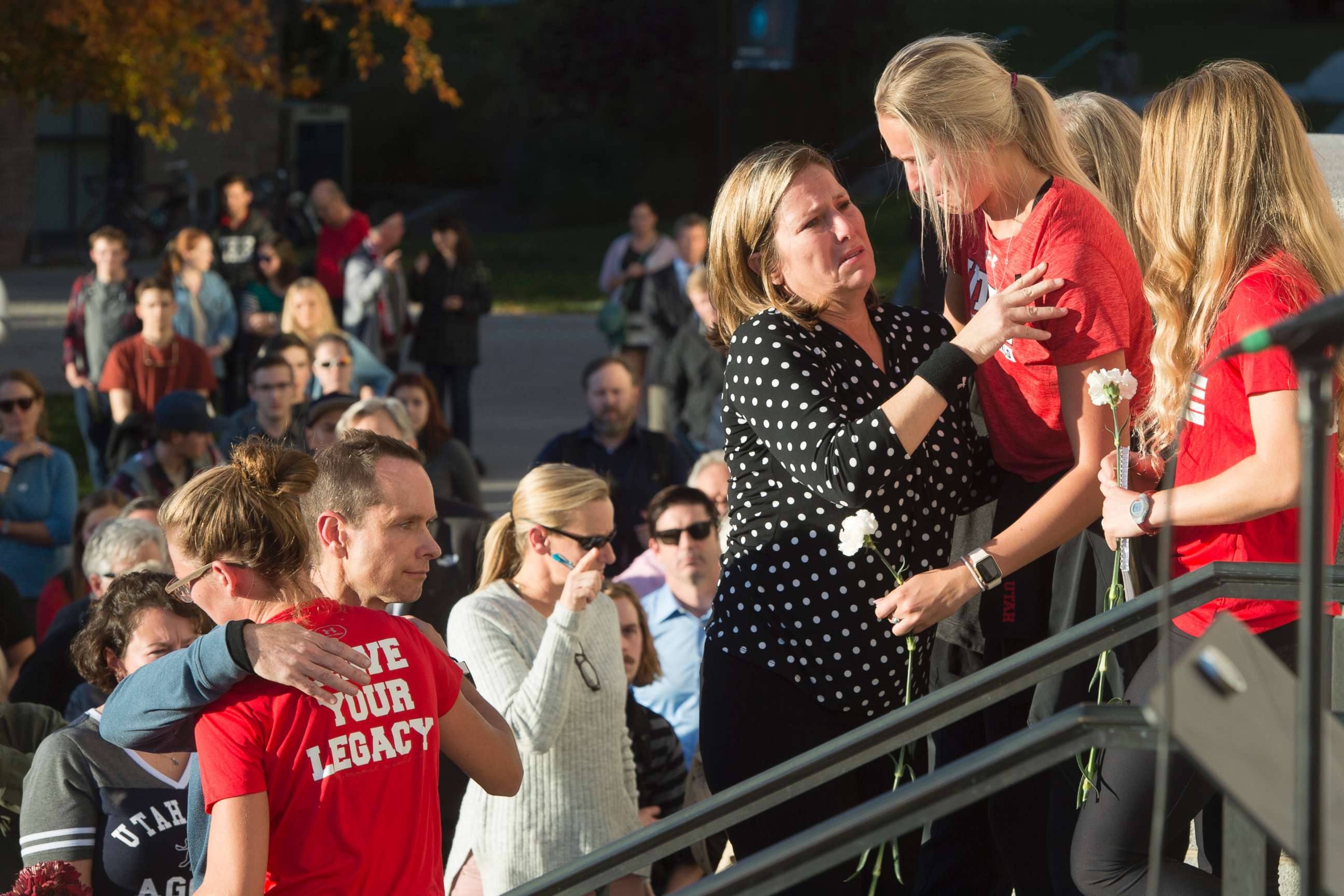
The university police department will undergo an independent investigation to review the current protocols in place, Brophy said. The actions of the officers involved in McCluskey's case will not be under review, he added.
"We will leave no stone un-turned," Watkins said.
Charges are not being considered for the woman who gave Rowland a ride after the murder and for the friend who lent him the gun, who are both cooperating with investigators, Brophy said. The woman contacted police after seeing Rowland's face on a local news broadcast, and Rowland had convinced the man the gun belonged to that he wanted to teach his girlfriend how to shoot, Brophy said.
Rowland "duped" them both, Brophy said.
A candlelit vigil was held in McCluskey's honor on Wednesday night, with many of her teammates wearing track and field gear to commemorate her.
ABC News' Bonnie McClean and Emily Shapiro contributed to this report.





